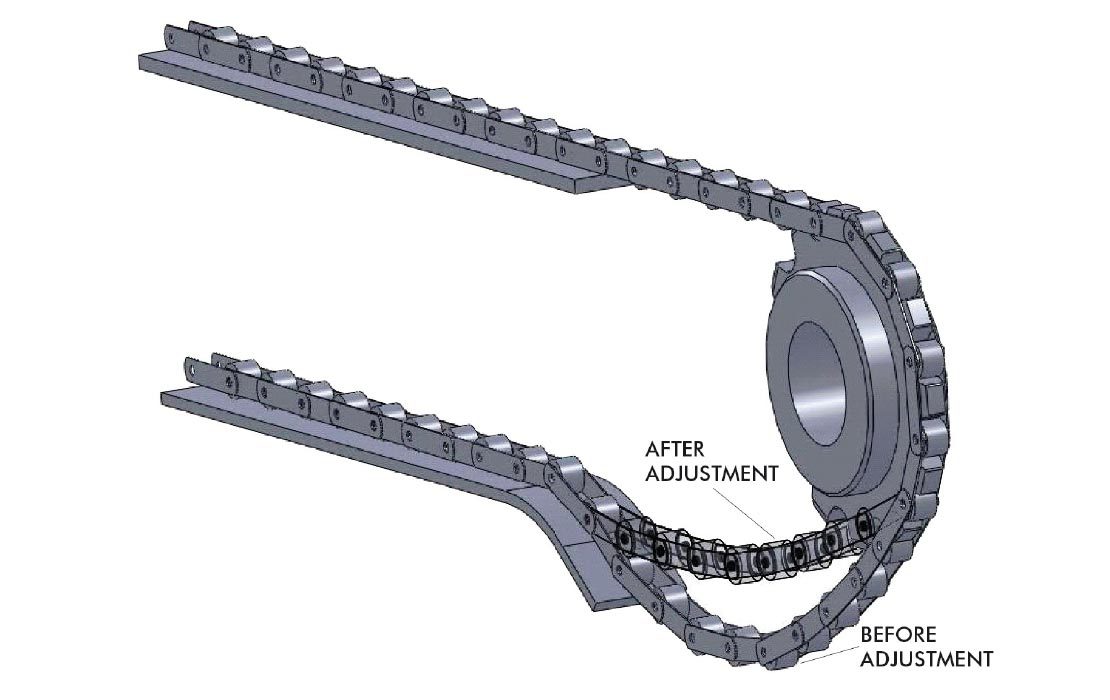19.9 Tensioning of Conveyor & Elevator Chain
Have questions or need a quote?
Get in touch with the team today.
It is essential that chains are tensioned sufficiently to take up the clearances between the chain bearing pins and chain bushes / barrels. Excessive tensioning will produce an increased rate of chain wear and in extreme cases could even wear out a chain within a few weeks. Insufficient tensioning is not so serious but will cause noisy running and some increase in wear particularly at higher running speeds.
An experienced chain engineer will probably rely on his own judgement of the tension imparted into a chain by the take up screws of the tensioning mechanism and then check his setting by lifting the chain away from the support tracking at the mid point of each chain strand. A typical amount of lift would amount to 1.00% of the chain strand centre distance i.e. on a 20 metre chain strand the lift would be approx 200 mm.
Such a check runs into problems when the weight of any chain is considerable. In such cases a method which can be adopted is to check the catenary / free hanging sag over a known length of unsupported chain as might occur at the end of a horizontal section of chain tracking and the slack side of the adjacent chain sprocket wheel. Any slack chain will be concentrated in this section by briefly turning the system over using the main drive. It may be necessary to remove a short section of chain support tracking to obtain a reasonable unsupported chain strand section say 2 metres/6ft. Approximate values for Minimum Chain Sag which are required at different values of unsupported chain length are listed below:
TABLE 19.9.1
|
Unsupported Chain Length |
Catenary Sag at Centre |
|
1.00 metres |
20 mm / 1.000” |
|
1.50 metres |
40 mm / 2.000” |
|
2.20 metres |
70 mm / 3.000” |
|
2.50 metres |
110 mm / 4.000” |
|
3.00 metres |
160 mm / 6.000” |
When a new chain is installed the “Take Up” should be adjusted after about 10 hours, 30 hours and 100 hours of running service. After that the chains should be inspected after an initial operating period of one month and thereafter every 3 months.
The tensioning of chain when running in the vertical plane is rather different and actually more critical since the mass of the chain will itself take up the clearances between the chain pin and bush / barrel. As the chain wears and extends in lengths however it will start to “drop away” from the bottom chain wheel and mal-gearing can easily result. Generally speaking these chain layouts tend to “self tension”, indeed some Vertical Elevator Systems include floating tail shafts where chain tension is solely dependant on Chain Mass. As a guide, chain deflection at the mid point of each chain strand is approx. 1.00% of the chain centre distance. Twin strand chain systems must be matched for equal chain tension.

